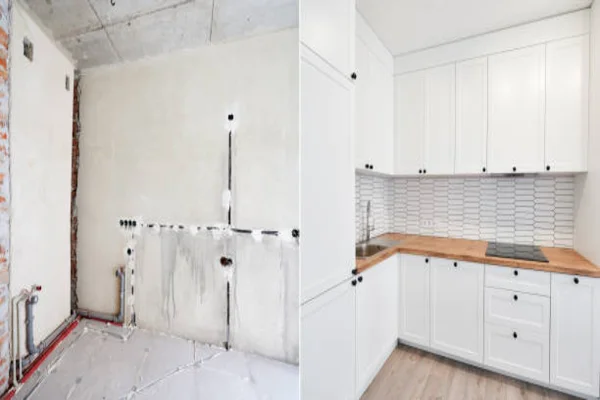best electrical conduiting work with green team DIP
electrical conduiting work is an important part of any electrical installation because it protects and routes electrical wiring throughout a building in a safe and organized manner. Proper conduiting ensures that electrical systems run efficiently and also safely, lowering the danger of fires and electrical failures. This article will go over the fundamentals of electrical conduit work, including crucial tools and supplies, installation techniques, and safety issues, providing a comprehensive reference for both new and experienced electricians.
What is electrical conduiting work?

electrical conduiting work
Within buildings or other structures, electrical cables are housed and also protected in conduits known as electrical conduits.
An integral component of the modern world’s infrastructure, electrical conduit is found in data centers, subway networks, ports, and also bridges.
Different varieties are offered depending on the application.
Depending on the needs of the installation environment, the duct utilized in your project can be either rigid or flexible, and it will provide varying degrees of protection against shock, corrosion, gasses, vapors, moisture, fire, and even electromagnetic interference.
Environments that are damp, extremely corrosive, or dangerous typically call for a specific conduit.
read more: RENOVATING THE LIGHTING IN YOUR HOME
Basics of Electrical Conduiting Work
Electrical conduiting is an important part of electrical installation that involves the use of protective tubing, or conduits, to encase and protect electrical wires. Proper conduiting ensures that electrical systems are safe, long-lasting, and also efficient. Here are the fundamental ideas and procedures involved in electrical conduiting work:
Understanding Conduits
There are various types of conduits. Conduits come in a variety of kinds, including rigid metal conduit (RMC), intermediate metal conduit (IMC), electrical metallic tube (EMT), and also flexible metal conduit.
PVC and liquid-tight flexible non-metallic conduit (LFNC) are both nonmetallic choices.
- Material Selection:
The type of conduit used in electrical conduiting work depends on the environment, the nature of the installation, and also local building codes.
read more:SWITCHGEAR MAINTENANCE COMPANIES IN DUBAI
Planning and design
Includes blueprints and layouts. Before beginning the installation, precise plans and layouts must be produced to identify the route of the conduit runs.
- Load Calculation:
Examine the electrical load requirements to confirm that the conduit size can support the required wire without overheating or causing significant voltage drop.
Installation Steps
- Measurement and Cutting:
Measure and cut the needed conduit lengths with the proper equipment. Make sure the cuts are clean and smooth to avoid harming the wires.
- Bending Conduits:
Use a conduit bender to create accurate bends that accommodate the building’s plan while avoiding sudden curves that can stress the wires.
Wire Drawing
- Wire Selection:
Determine the proper type and gauge of wire based on the electrical load and application.
- Wire drawing tape:
Use wire drawing tape to place wires in channels. This gadget makes it simple to route wires through curves and large sections of conduit.
- Lubrication:
Use a lubricant to pull the wires to reduce friction and protect them from harm during the installation procedure.
Insurance and Support
Use straps and clips to secure ducts to walls, ceilings, or other structures.
Follow local code standards for spacing and support periods.
- Protection:
Make sure that channels are protected from physical harm, especially in locations that are exposed or have heavy traffic.
Inspection and Testing
After installation, verify the conduit to ensure it complies with electrical codes and standards.
Test the wiring for continuity, insulation resistance, and adequate grounding to guarantee a safe and dependable electrical system.
Maintenance:
- Regular checks:
Conduct regular inspections of conduit installations for indicators of wear, corrosion, or damage.
- Repairs and Upgrades:
Respond quickly to any problems and investigate upgrades to match increases in electricity demand or technological advancements.
read more: BEST RENOVATION COMPANY DUBAI
Key Tools and Materials for Successful Electrical Conduiting
Electrical conduiting work necessitates the use of specialized techniques and materials to provide a safe, efficient, and professional installation.
The following is a list of needed tools and materials for successful electrical conduit installation.
Conduit Bender
Used to make accurate bends in conduits, letting them to avoid obstructions and fit into the building layout.
Hacksaw or conduit cutter
Used to cut conduits to the appropriate lengths.
Conduit cutters make cleaner cuts, which reduces the requirement for deburring.
Fish Tape
A flexible, retractable tool used to draw wires into conduits, particularly for lengthy runs and navigating curves.
Wire strippers
Used to remove insulation from electrical wires without causing damage to the conductors.
Tape Measure
Essential for precisely measuring conduit lengths and distances between fittings and fixtures.
Conduits
- Rigid Metal Conduit (RMC):
Strong protection for electrical wiring, commonly used in industrial applications.
- Intermediate Metal Conduit (IMC):
Lighter than RMC but still durable, appropriate for a wide range of applications.
- Electrical Metallic Tubing (EMT):
Lightweight and easy to work with, it is widely employed in residential and commercial constructions.
- Flexible Metal Conduit (FMC):
Enables flexible routing in tight places or locations with vibration.
Best Practices for Electrical Conduiting

electrical conduiting work
When discussing electrical installations, observe these standards.
Place electrical wiring projects in the hands of pros.
If you don’t want your home to turn into a pyrotechnics display, leave the electrical repair to the professionals.
Avoid making mistakes with household electrical connections. You don’t want to discover the hard way that you wired your home as a rookie would.
Learn the fundamentals of electrical wiring at home. Understanding the specifics of house connections avoids unpleasant surprises.
How to complete electrical extension work safely
To do electrical extension work safely, first switch off the power to the circuit you’ll be working on at the main breaker panel and confirm it’s off with a voltage tester.
Plan your work carefully to ensure it meets local electrical codes.
Gather all essential equipment and materials, and assess the current circuit’s capabilities.
Install conduit and pull wires with fish tape and lubricant.
Make safe connections in a junction box to ensure appropriate grounding.
Finally, install new outlets or switches, ensuring that all connections are tight and secure, and then cover all boxes with cover plates.
Or you can ask a professional company like Green Team to take over this task.
To summarize, electrical conduiting work is critical for the safety and efficiency of electrical systems. Electricians may assure long-lasting and dependable conduit installations by utilizing the right tools and materials, performing proper installation techniques, and complying to safety guidelines.
Understanding the basics of conduiting work, whether for new construction or upgrades, contributes to the integrity of electrical infrastructure, protecting both property and lives. So it’s better to deal with a company like Green Team for those kinds of works, for more details about our services, contact our team now.






























